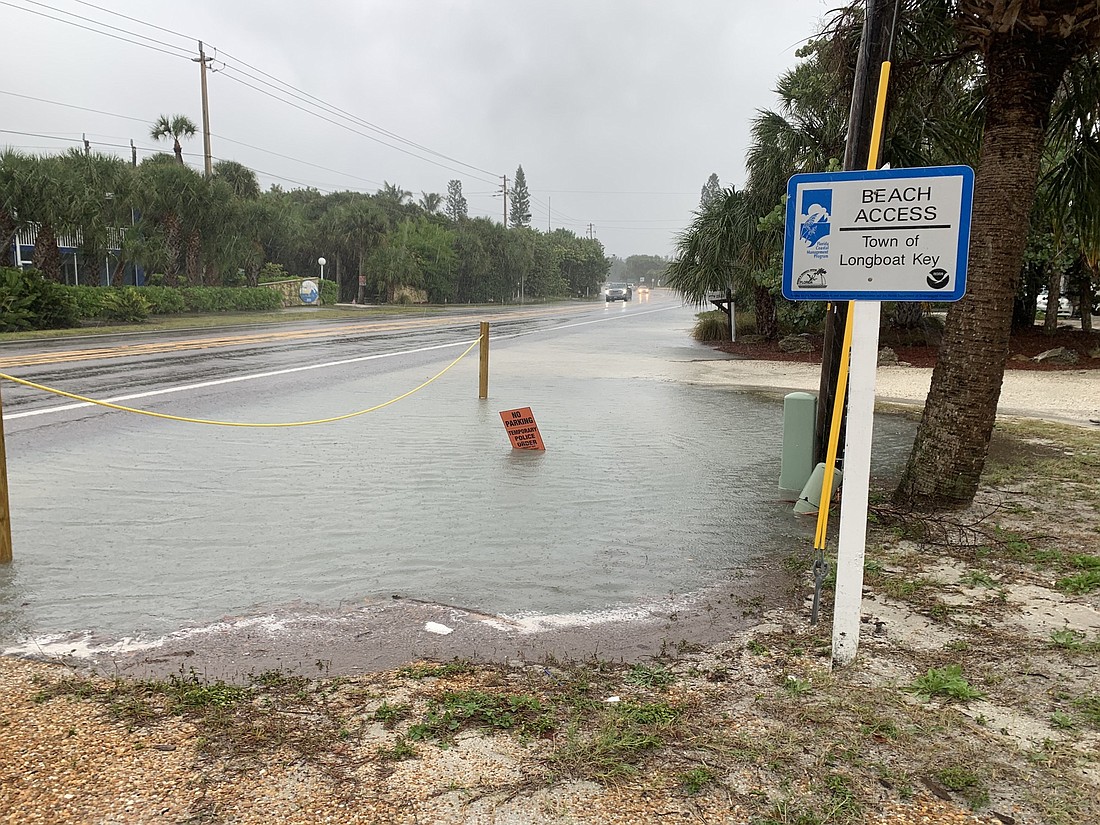- April 19, 2024
-
-
Loading

Loading

Town and county leaders emphasized many of the same messages people hear each year when preparing for the Atlantic hurricane season.
Up to 90 people attended Thursday afternoon’s “Zoominar” conducted by the Longboat Key Chamber of Commerce and the town of Longboat Key. It marked their 19th annual disaster preparedness seminar and the second consecutive year they held it using Zoom.
“When we ask people to evacuate, they need to evacuate,” Fire Chief Paul Dezzi said.
The last time such an order was issued was in September 2017 in advance of Hurricane Irma.
Manatee County Emergency Management Chief Steve Litschauer said evacuations are called for two reasons:
Dezzi and Litschauer were among several leaders who spoke Thursday. Joining them were Deputy Police Chief Frank Rubino, Mayor Ken Schneier, Town Manager Tom Harmer, Longboat Key Chamber President Gail Loefgren, Sarasota County Emergency Management Chief Ed McCrane, ABC 7 chief meteorologist Bob Harrigan and Sarasota’s Climate Adaptation Center CEO Bob Bunting.
“Have a plan,” Litschauer said. “What are you going to do in case something happens?”
Litschauer explained how the counties’ emergency shelters are a “refuge of last resort.”
“We say it’s a lifeboat, not a cruise ship,” Litschauer said. “A shelter is a safe environment that you will be fed at. You have to bring everything else.”
Litschauer encouraged people to stay with family and friends who live inland or away from the the coast.
While there were concerns last year about the shelters’ social distancing requirements because of the COVID-19 pandemic, McCrane said people will not be required to wear a mask or to be vaccinated to enter an emergency shelter this time around.
“If you have not been vaccinated, which is not mandatory, or you have other respiratory or other illnesses that will make you more vulnerable, we recommend you continue wearing that mask inside of the facility that’s going to have a lot of people in it,” McCrane said.
Citing state data at a recent Town Commission meeting, Harmer said the town has a 99.6% vaccination rate.
Area leaders recommended signing up for the town’s Alert Longboat Key emergency-notification system.
Last month, Dezzi also held a Zoom session with town stakeholders to discuss hurricane season preparations.
“I always tell people, if you see the taillights of the fire truck or the ambulance, you’re leaving the island too late because the fire truck, the ambulance and the police department are the last vehicles or last people to leave the island during a storm,” Dezzi said.
While Dezzi explained the town’s evacuation process if leaders deem it’s necessary, Rubino discussed the three-tier system the town uses to ensure conditions are safe for residents to return.
Rubino urged residents to bring identification, a water or utility bill to prove Longboat Key residence or employment.
“There’s not one hurricane that’s going to be the same,” Rubino said. “I’ve been working [for] 40 years and I’ve responded to every hurricane in South Florida where I worked, and even Katrina, and not one of those has been the same.”
Thursday’s theme was “preparing in a warmed world.”
Bunting discussed how the Sarasota Climate Adaptation Center is forecasting 10 hurricanes this year, including between three to five major hurricanes.
“Warm water is really rocket fuel for hurricanes, and we’ve had very warm water,” Bunting said.
Bunting said Sarasota Climate Adaptation Center’s forecast relies on signals from buoys that measure sea level temperature.
“What you see in the hurricane formation area is really near-normal temperatures,” Bunting said. “Near normal is a good thing. Below normal would be even a better thing.”
Loefgren said while the Chamber of Commerce plans to resume holding the disaster preparedness seminar in person starting next year, she plans to continue streaming the meeting on Zoom. Several residents watched and participated in Thursday’s meeting while out of state for the summer.
Hurricane season runs each year from June 1 through Nov. 30.